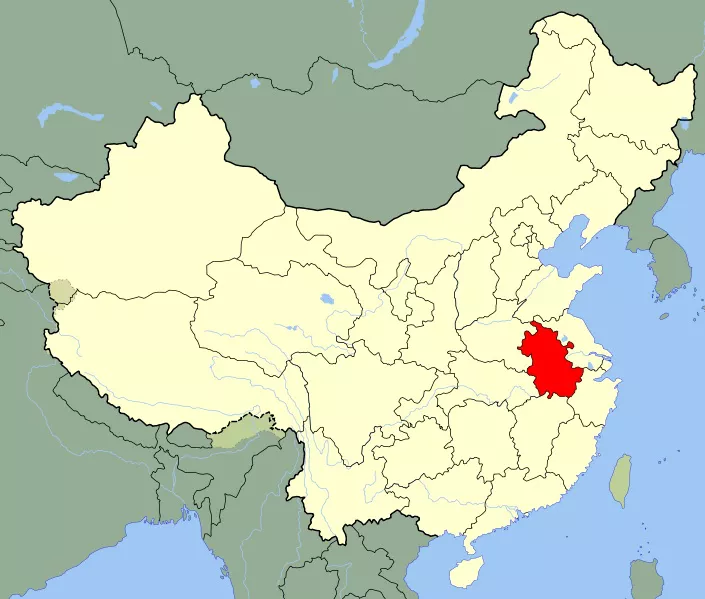Summary of China’s Provinces
- Anhui Province
- Fujian Province
- Gansu Province
- Guangdong Province
- Guizhou Province
- Hainan Province
- Hebei Province
- Heilongjiang Province
- Henan Province
- Hunan Province
- Hubei Province
- Jiangsu Province
- Jiangxi Province
- Jilin Province
- Liaoning Province
- Qinghai Province
- Shaanxi Province
- Shandong Province
- Shanxi Province
- Sichuan Province
- Yunnan Province
- Zhejiang Province
China is the world’s third-largest country, after Russia and Canada. Its political geography is intricate, comprising five different administrative zones, including 22 provinces, five autonomous regions, four municipalities, and two special administrative regions (SARs), as well as one claimed province. Below is a comprehensive list of the provinces in Mainland China, arranged in alphabetical order. Taiwan, which is the twenty-third and claimed province, is listed separately.
Anhui Province
Capital city: Hefei
Provincial population: 64.6 million
Famous for:
- Yellow Mountains (Huang Shan)
- UNESCO villages and Huizhou Architecture
- Jiuhuashan, one of China’s four Holy Buddhist mountains.
Fujian Province
:max_bytes(150000):strip_icc():format(webp)/Fujian_Province-56a39a743df78cf7727e26c6.jpg)
Capital city: Fuzhou
Provincial population: 35.1 million
Famous for:
- Xiamen (formerly “Amoy”),
- Gulangyu
- Wuyishan Scenic Area
- Wulong Tea
- Hakka architecture
Gansu Province
:max_bytes(150000):strip_icc():format(webp)/Gansu_Province-56a39a745f9b58b7d0d2bac5.jpg)
Capital city: Lanzhou
Provincial population: 29.2 million
Famous for:
- Gansu Provincial Museum in Lanzhou
- Ming-era Great Wall Jiayuguan Pass
- Dunhuang City for Silk Road history and Mogao Grottoes
- Hexi Corridor portion of the Silk Road
- Tibetan Autonomous Area encompassing Labrang Monastery
Guangdong Province
:max_bytes(150000):strip_icc():format(webp)/Guangdong_Province-56a39a745f9b58b7d0d2bac8.jpg)
Capital city: Guangzhou
Provincial population: 113 million
Famous for: factories and industry; its capital, Guangzhou (formerly “Canton”).
Guizhou Province
:max_bytes(150000):strip_icc():format(webp)/Guizhou_Province-56a39a745f9b58b7d0d2bacb.jpg)
Capital city: Guiyang
Provincial population: 39 million
Famous for: large populations of minority peoples such as the Miao, Dong, and Buyi.
Hainan Province
:max_bytes(150000):strip_icc():format(webp)/Hainan_Province-56a39a745f9b58b7d0d2bace.jpg)
Capital city: Haikou
Provincial population: 7.2 million
Famous for: beaches at Yalong Bay.
Hebei Province
:max_bytes(150000):strip_icc():format(webp)/Hebei_Province-56a39a753df78cf7727e26ca.jpg)
Capital city: Shijiazhuang
Provincial population: 68 million
Famous for: Chengde’s Qing Dynasty summer palace (UNESCO Cultural World Heritage Site), Great Wall Shanhaiguan Pass, the easternmost end of the Ming-era Great Wall.
Heilongjiang Province
:max_bytes(150000):strip_icc():format(webp)/Heilongjiang_Province-56a39a765f9b58b7d0d2bad4.jpg)
Capital city: Harbin
Provincial population: 38.2 million
Famous for: historically being part of Manchuria; Harbin’s annual Ice & Snow Festival.
Henan Province
:max_bytes(150000):strip_icc():format(webp)/Henan_Province-56a39a765f9b58b7d0d2bad7.jpg)
Capital city: Zhengzhou
Provincial population: 98.7 million
Famous for:
- The Yellow River area – the cradle of Chinese Civilization
- Shaolin Temple
- The Longmen Grottoes
Hunan Province
:max_bytes(150000):strip_icc():format(webp)/Hunan_Province-56a39a763df78cf7727e26cf.jpg)
Capital city: Changsha
Provincial population: 67 million
Famous for:
- Delicious spicy food
- Mao Zedong’s birth village of Shaoshan Chong
- Wulingyuan scenic area
Hubei Province
:max_bytes(150000):strip_icc():format(webp)/Hubei_Province-56a39a765f9b58b7d0d2bada.jpg)
Capital city: Wuhan
Provincial population: 60.2 million
Famous for: The Three Gorges on the Yangtze River.
Jiangsu Province
:max_bytes(150000):strip_icc():format(webp)/Jiangsu_Province-56a39a763df78cf7727e26d2.jpg)
Capital city: Nanjing
Provincial population: 75.5 million
Famous for:
- Nanjing – the ancient capital of China and the site of major Japanese atrocities during WWII
- Suzhou – UNESCO World Heritage Site full of gardens and temples
- Yixing where China’s most famous clay teapots are made
Jiangxi Province
:max_bytes(150000):strip_icc():format(webp)/Jiangxi_Province-56a39a773df78cf7727e26d5.jpg)
Capital city: Nanchang
Provincial population: 42.8 million
Famous for:
- Jingdezhen – the home of Chinese porcelain
- Lushan National Park, a UNESCO World Heritage Site
Jilin Province
:max_bytes(150000):strip_icc():format(webp)/Jilin_Province-56a39a775f9b58b7d0d2badd.jpg)
Capital city: Changchun
Provincial population: 42.2 million
Famous for:
- Being historically part of Manchuria
- The scenery at Heaven Lake on the North Korean border
Liaoning Province
:max_bytes(150000):strip_icc():format(webp)/Liaoning_Province-56a39a775f9b58b7d0d2bae0.jpg)
Capital city: Shenyang
Provincial population: 27.1 million
Famous for:
- Being historically part of Manchuria
- Manchu cultural and historical sites (the Qing Dynasty was established by the Manchus in Liaoning, who then moved their capital to the Forbidden City in Beijing)
- Dalian, a beautiful port city with beaches and foreign architecture
Qinghai Province
:max_bytes(150000):strip_icc():format(webp)/Qinghai_Province-56a39a775f9b58b7d0d2bae3.jpg)
Capital city: Xining
Provincial population: 5.4 million
Famous for:
- The Qinghai-Tibet Railway
- Qinghai Lake, China’s largest saltwater lake, and scenic area
- Tibetan autonomous area outside Xining around Kumbum Monastery
Shaanxi Province
:max_bytes(150000):strip_icc():format(webp)/Shaanxi_Province-56a39a773df78cf7727e26d8.jpg)
Capital city: Xi’an
Provincial population: 37 million
Famous for:
- Terracotta Warriors Museum
- Xi’an’s Muslim quarter and ancient city wall
Shandong Province
:max_bytes(150000):strip_icc():format(webp)/Shandong_Province-56a39a783df78cf7727e26db.png)
Capital city: Jinan
Provincial population: 91.8 million
Famous for:
- Qingdao’s famous International Beer Festival
- Qufu – home of Confucius (the Kong family)
Shanxi Province
:max_bytes(150000):strip_icc():format(webp)/Shanxi_Province-56a39a783df78cf7727e26de.jpg)
Capital city: Taiyuan
Provincial population: 33.4 million
Famous for:
- Pingyao, a Ming-era walled city
- Wutaishan, one of China’s four holy Buddhist mountains
- Datong Buddhist grottoes
Sichuan Province
:max_bytes(150000):strip_icc():format(webp)/Sichuan_Province-56a39a783df78cf7727e26e1.png)
Capital city: Chengdu
Provincial population: 87.3 million
Famous for:
- Chengdu’s many attractions
- Qingcheng Mountain
- Spicy Sichuan (or Szechuan) cuisine
- Giant Pandas
- Emeishan, one of China’s four holy Buddhist mountains
Yunnan Province
:max_bytes(150000):strip_icc():format(webp)/Yunnan_Province-56a39a785f9b58b7d0d2bae6.jpg)
Capital city: Kunming
Provincial population: 44.2 million
Famous for:
- A large population of minority groups
- Lijiang, a UNESCO World Heritage Site famed for its Naxi minority culture
- Shangri-La, an ethnic Tibetan community in the high mountains
- Xishuangbanna, a trekking area famed for beautiful scenery
Zhejiang Province
:max_bytes(150000):strip_icc():format(webp)/Zhejiang_Province-56a39a783df78cf7727e26e4.jpg)
Capital city: Hangzhou
Provincial population: 47.2 million
Famous for:
- Longjing tea, the most famous of Chinese green teas
- Putuoshan, one of China’s four holy Buddhist mountains
- Hangzhou’s West Lake
- Moganshan Scenic Area




